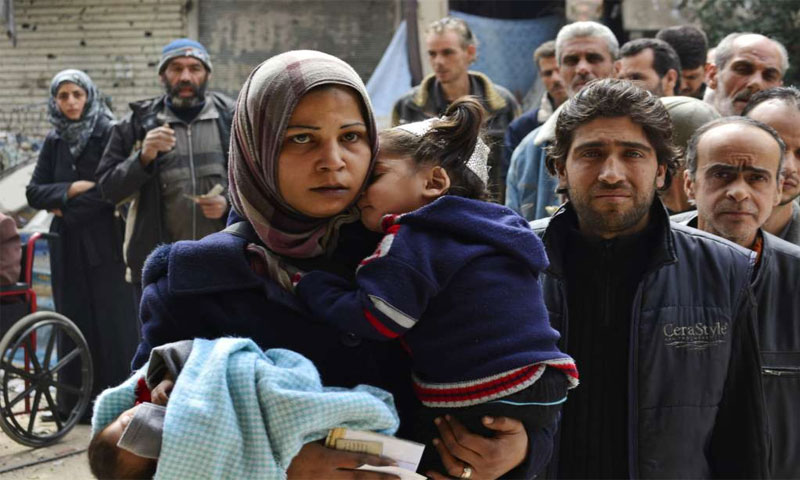Some families have returned to the Yarmouk camp, south of the Syrian capital, Damascus, after obtaining the security approval required by Damascus governorate to return to the camp.
On 19 November, the “Action Group for the Palestinians of Syria (AGPS)” quoted field sources and eyewitnesses as saying that a number of Palestinian families were able to introduce furniture to their houses located in the streets of al-Mahkama, Haifa, and al-Urouba, after obtaining security approvals.
In coincidence with the residents’ return, activists from the camp launched a campaign called “Host Your Brother” to support families whose houses were badly damaged by war by hosting them in habitable dwellings for free.
Some citizens expressed their fear of returning because of the continuous looting operations and theft in the camp without the presence of a deterrent.
Others wondered about the reasons for imposing security approvals on people who want to return to their houses, which they were forced to leave because of war in Syria.
Damascus governorate started receiving citizens’ demands to return to the Yarmouk camp on 10 November and under specific conditions.
According to the Russian Sputnik news agency, Anwar Abdul Hadi, the Director of the Political Department of the Palestine Liberation Organization (PLO), has said that the residents’ return process would go through three stages. The first stage would be submitting applications, the second a structural checkup of the house, and a study of its habitability, while the last and third stage would be to approve restoration and housing.
On 5 October, the Executive Office in Damascus governorate set three conditions that allow the Yarmouk camp residents to return home.
Samir Jazairli, a member of the Executive Office of Damascus governorate, said that the governorate “is working to facilitate the residents’ return, who have been forcibly displaced by terrorism, to the Yarmouk camp under three conditions,” according to the local newspaper “al-Watan.”
The Yarmouk camp currently hosts between 100 and 150 families, some of whom experienced the camp siege and lived there throughout that period from 2013 to 2018. While the other part is the families of the Palestinian factions, who fought alongside the Syrian regime.

